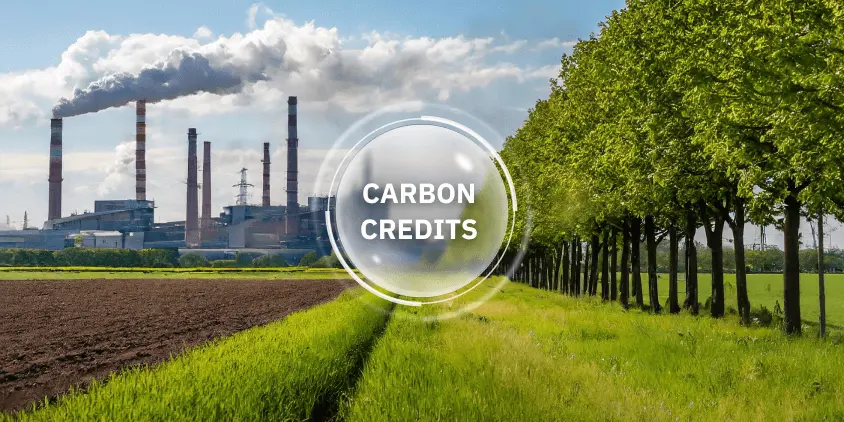A carbon credit is a certificate representing the reduction or removal of one ton of CO₂ from the atmosphere. These credits are generated through projects that absorb greenhouse gases, like reforestation, carbon capture and storage initiatives, or improvements in industrial processes to reduce emissions. Carbon credits can be traded as financial instruments, allowing companies or countries to offset their carbon footprint.
This article will provide you with an overview of carbon credit classifications.

1. By Origin:
Credits from voluntary projects: These credits are generated from projects that are not subject to mandatory legal obligations. Organizations or companies participate in such projects to voluntarily offset their emissions. Examples of these types of projects include renewable energy projects in developing countries or local ecosystem restoration projects aimed at increasing CO2 absorption.
Credits from compliance systems: These credits are issued under mandatory emission trading programs, such as the European Union Emissions Trading System (EU ETS). Companies are required to comply with emission limits and purchase credits to offset emissions exceeding their allowed limits. Examples of this type of project include the implementation of emission capture systems in power plants or high-emission industrial projects.
2. By Type of Emission Reduction Project:
Renewable energy projects: Projects such as wind and solar power help reduce emissions by replacing fossil fuel energy sources. Notable examples include offshore wind farms in Vietnam or rooftop solar power systems.
Forestry projects: These include reforestation or the protection of existing forests to absorb CO2 from the atmosphere. Specific examples include the Amazon rainforest protection project or large-scale tree planting programs in Vietnam to combat desertification.
Industrial projects: Applying advanced technology to reduce emissions during production, such as energy-efficient machinery or effective dust filtration systems. An example is upgrading technology in cement plants to reduce CO2 emissions.
Carbon Capture and Storage (CCS) projects: Capturing CO2 from major emission sources such as power plants or directly from the air and storing it safely underground. An example is carbon capture projects from ammonia production plants in some industrialized countries.
3. By Nature of the Credits:
Removal credits: These credits represent the amount of CO2 removed from the atmosphere through natural measures or artificial technology like carbon capture and storage (CCS). An example of such a project is “Direct Air Capture” technology, which extracts CO2 directly from the air and stores it underground.
Reduction credits: Created when new emissions reductions occur compared to standard levels, typically seen in renewable energy projects or energy-saving initiatives. An example is a solar power project providing electricity to a rural community, replacing the use of diesel generators.
4. By Certification Standards:
Gold Standard: Designed to ensure that carbon credits not only reduce emissions but also bring significant social and environmental benefits, such as improving the quality of life in communities. An example is the fuel-efficient stove-building projects in Africa that reduce wood consumption and CO2 emissions.
VCS (Verified Carbon Standard): A popular standard for voluntary projects, suitable for a wide range of projects from renewable energy to forestry. An example is a large-scale solar power project in Asia certified by VCS.
VER+ Standard: A widely recognized standard verified by third parties. An example includes forestry projects in South America that protect forests to absorb CO2.
Carbon credits play an important role in greenhouse gas emission reduction strategies, helping to distinguish between new emissions reductions and the removal of existing CO2 from the atmosphere, facilitating sustainable initiatives across various economic sectors.





